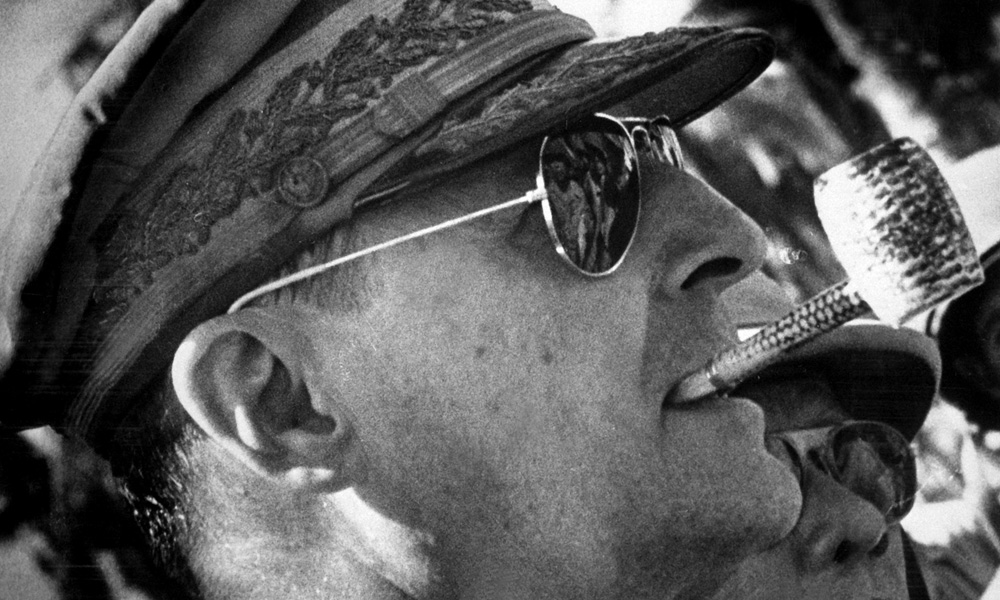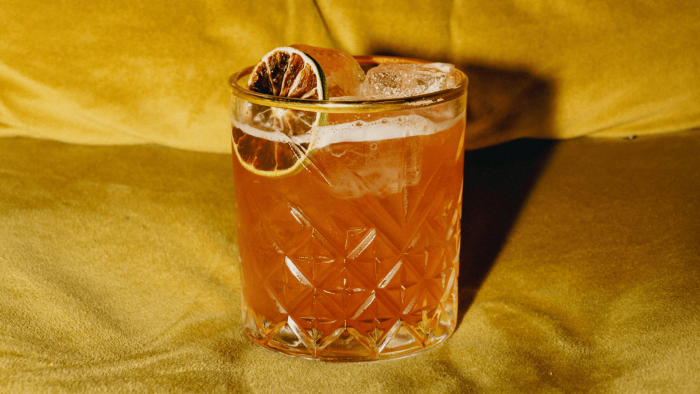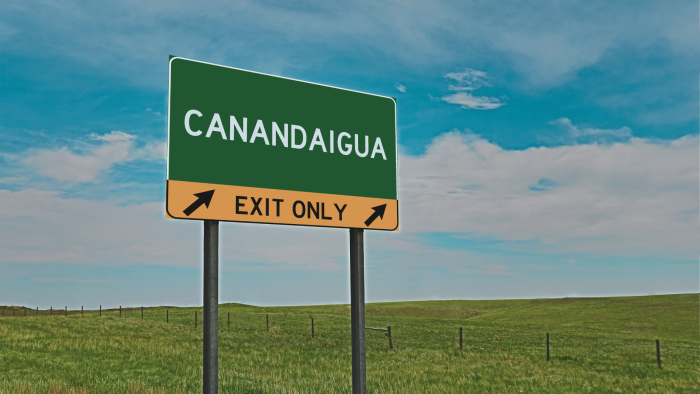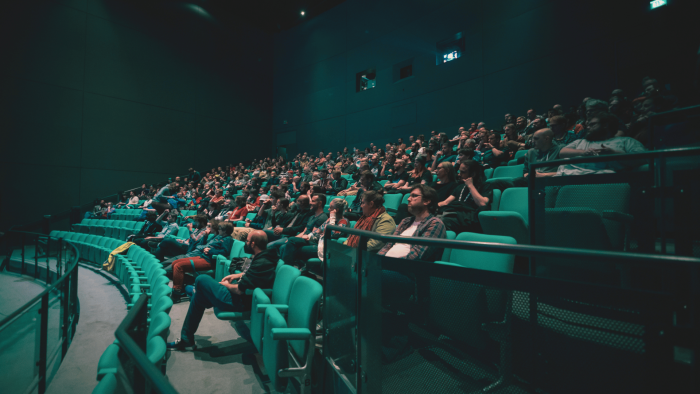Whether or not you’re conscious of it, your wardrobe has extremely deep military roots. People might have wanted to dress like their war heroes or soldiers brought back certain gear that adapted well to civilian life. Maybe soldiers also didn’t want to give up certain aspects of military life once they got out and their children continued the fashion. Whatever the reason, clothing and equipment that was designed with almost completely function and no form in mind ended up capturing the fashion sensibilities of the public and defining the style of generations.
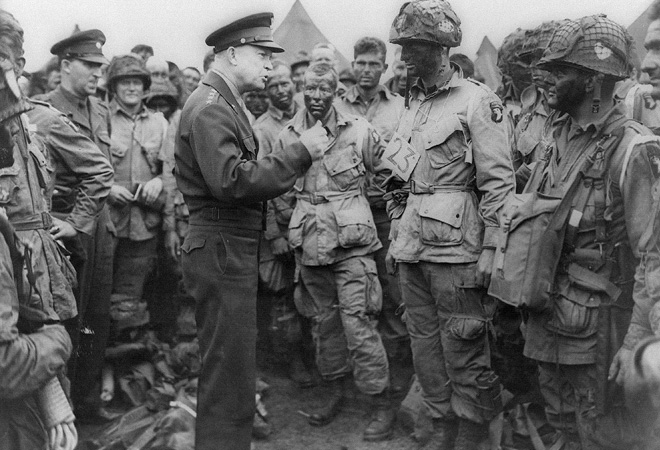
Cargo Pants
The most impressive thing about cargo pants and their shorter relatives has to be how divisive they are. It feels like there’s some new attack or defense piece being published every month, all for pants. This style is more divisive than how people eat Oreos or how to fix American healthcare, and all it took to start the argument was sewing two extra pockets onto a pair of looser khaki pants. But let’s let everyone tire themselves out arguing about whether or not you should be wearing pants with six pockets and talk instead about why pants ever got six pockets to begin with.
You carry a lot of stuff in war, and you need access to it pretty quickly. In a trend you’ll see a lot through this article, the British were the first to add extra pockets to their pants back in 1938. The thought was to provide easy access to first aid supplies and maps, ensuring their soldiers stayed healthy and not lost. It was a practical addition to the pants, though it lacked durability since the pockets were sewn onto pants that already existed, rather than incorporated into the initial weaving.
The pants didn’t come into their own until an officer in the U.S. 82nd Airborne, Major William P. Yarborough, decided to rework the American paratroopers uniform. The first airborne uniforms were simple, with one-piece jumpsuits worn over regular infantry uniforms. But Yarborough’s design ditched all that hassle, instead focusing on combat readiness. He added larger pockets to the paratroopers jackets and pants, four up top, two down bottom, as well as reworked their jump boots. The extra pockets meant troopers could fight almost immediately after landing, as they wouldn’t be fumbling around for ammo, grenades, maps, or any other combat necessities. They could repel the hun without even unstrapping from their parachute (though they’d need to do that pretty quickly too).
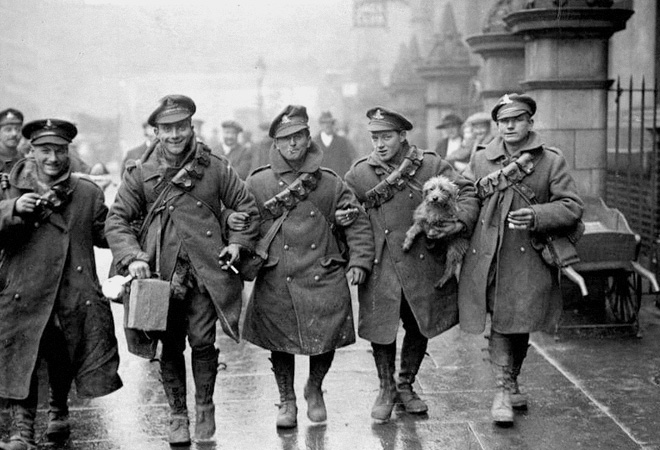
Trench Coats
Trench coats are one of those things where most of the history is right there in the name, but people have used it out of context so often, it’s been divorced from its origin. It wasn’t created with World War I specifically in mind, though, and there were a number of coats remarkably similar starting from the early 1800s. Those first coats weren’t popular though, as they incorporated a lot of odorous rubber and melted in the sun. Improvements were made to the design, and some became popular with the upper classes, but even so, it might be helpful to think of them all as proofs of concept for the imminent trench coat.
There was even a predecessor to the trench coat active in British wars up to and including the First World War. Their heavy woolen overcoats shared many of the same general characteristics as the trench coat, such as length, function, materials (to a degree), and durability. But eventually, the British army’s need for a durable, light, insulating, water repellent coat that didn’t impede movement overtook the overcoat. The trench coat even enhanced troops combat effectiveness, with accessible storage areas for equipment and easily recognizable areas for displaying an officer’s rank.
It’s also interesting to note that the coat that goes hand in hand with British trench warfare was never a standard issue piece of the uniform. They were private purchases officers commissioned from British tailors, something that helped reinforce class distinctions in the British army and helped create the coat’s swankier reputation. If you had a trench coat, chances were (and kind of still are) you had money to spare and not everyone was going to look on that favorably. Luckily, Hollywood swooped in and turned the coat into a symbol of class and cool, rather than economic inequality, so we can all feel a little less guilty about the origins.
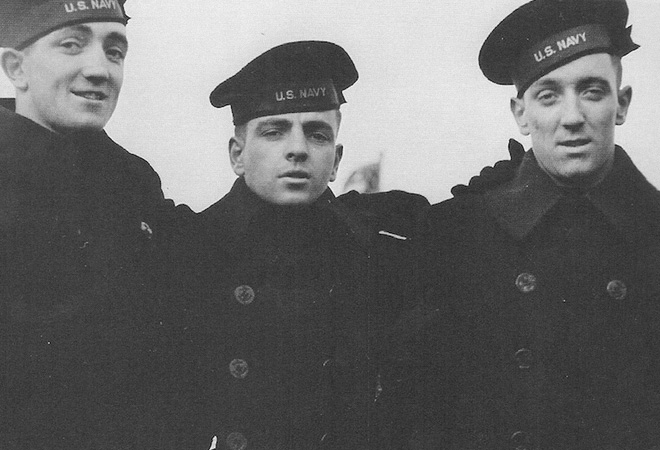
Pea Coats
Pea coats share a handful of similarities with the trench coat, with the largest one being we can thank the British for their popularity, though they weren’t the ones who invented it. For that we can thank the Dutch. Not long ago, the Dutch were a force to be feared, at least on the water. We’re talking 1800s here too, so even if it is outside living memory, it isn’t far outside. The name comes from their “pije,” a word used for coarse wool fabric, the kind where it’s really all you need for insulation, even on a day where the wind rips through any of the other clothes you could be wearing.
When the British got their hands on it, they used it as a uniform for their petty officers. The U.S. Navy also got in on the action, using it as a coat for “reefers,” the men whose job it was to climb the rigging of their sailing ships. All three versions of coat are approximately the same, the style changing with technology as it was made available. They all had heavy wool, were designed for naval activity, and were meant to be more form fitting than most outerwear. The fit kept sailors warm and dry while also allowing them full range of motion, since, especially on those older sailing ships, not being able to lift your arms all the way or quickly enough was a matter of life and death.
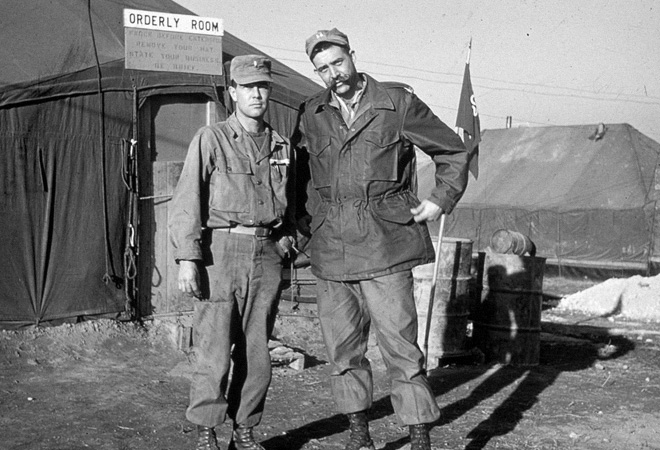
Field Jacket
It’s hard to rival the dichotomous statement of something like the Vietnam era field jacket. Years of research and development went into every aspect of the piece, though maybe none more so than the color. The development path for Olive Green 107 runs from the American Revolution all the way up to the post-war revitalization of Army morale. For most of American history, the armed forces wore whatever they could get their hands on in whatever color it came. It wasn’t until 1821 that dark blue became an actually measurable standard, since before then it had been more of a recommendation, and it was only around until troops started asking for camo during the Spanish American War. That olive green/brown of World War 2 fame was popular for a little, but wartime experience showed there was a significantly negative effect on morale. In 1949, the government set out to rectify that. They found Army Green.
Olive Green 107 was phased in in the late ‘50s, early ‘60s. It was a color found to be “flattering to the greatest range of people” (remember, recently desegregated military) and conveyed “the confidence and readiness of an authoritative military force.” The most easily obtainable and commonly seen piece of clothing the color was on was the standard field jacket, just in time for the counterculture revolution against the war in Vietnam. What was meant to show competence and uniformity in the United States Armed Forces quickly came to symbolize open rebellion against that very organization. John Kerry, John Lennon, and Jane Fonda all wore the jacket as a way to co-opt and change a piece of military culture, both to honor the men dying in what they saw as an unjust war and to protest action in Vietnam.
The field jacket’s since lost some of that edge and is available in a lot more than Olive Green 107, but there are still feelings of counterculture around it. Plenty of the people seen wearing it, supermodels, athletes, random passersby, wouldn’t even consider joining the military. If anything, they’re wearing it because it’s another jacket Hollywood snapped up, using it in Taxi Driver, Annie Hall, and Serpico, among others. Though, to be fair to that era of Hollywood, they’re motivation was at least thematic and not a marketing stunt.
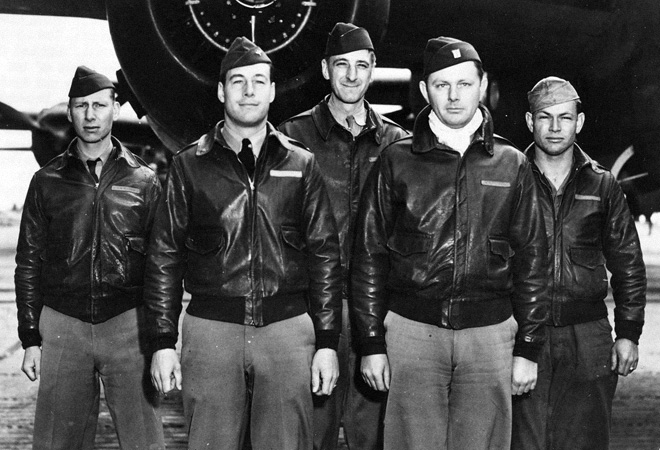
Bomber Jackets
In their name, bomber jackets are pretty much just like trench coats. Everyone knows what they look like, but no one thinks about the first half of what they’re talking about. In practice, the bomber has a little more in common with the pea coat. Both on ships and in planes, you’d be working in tight conditions and cold temperatures, so sailors and pilots needed ways to stay warm without interfering with their operational effectiveness. The bomber jacket was the answer.
The MA-1, which is the bomber jacket style most commonly sold today, wouldn’t exist with the bulkier (arguably cooler) versions that came before it. It was horsehide leather and didn’t have the fur collar that’s now so iconic. It was thick, heavy protection against the conditions only pilots had to face. But it’s immediate effectiveness didn’t mean there wasn’t room for improvement, especially as planes incorporate more tech, got faster, and flew higher.
The B-15, a style much closer to the modern bomber, was the next logical step. It was in the B-15 that we first see the fur collar, cotton outer, and slash pockets that we all associate with the iconic jacket. After that, there were only a few tweaks to make until we got to the MA-1.
Modern civilian bomber jackets include details from every iteration. You can get leather ones with knit collars, nylon with a fur collar, and as puffy or thin as you want it to be. But no matter the style, they all come back to flyboys over Europe.
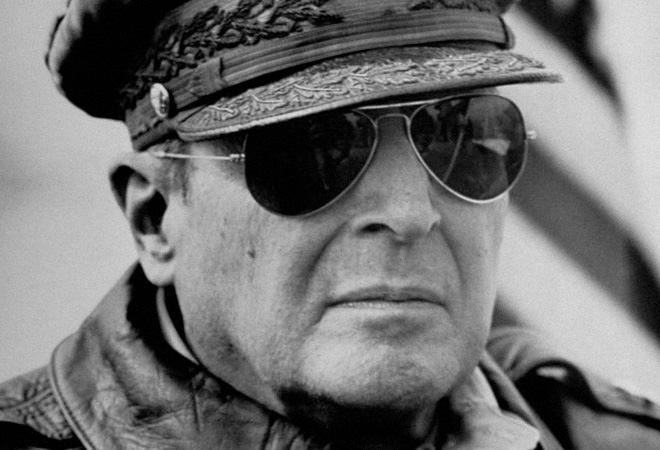
Aviator Sunglasses
Aviators don’t have strictly military origins, like some of the other entries on this list, but their initial surge in popularity is absolutely rooted in the armed forces. They first appeared in aviation in between World Wars in 1920 after Shorty Schroeder flew above 33,000 feet. That’s almost cruising altitude for modern airliners and if you’ve ever flown, you know that ice starts to form on the windows at that point. Long story short, Schroeder froze his eyes closed. Not permanently, just for that flight and slightly after. His friend John Macready’s flight was slightly better fated, though he complained of how intense the sun gets that high up. Not long after, Macready, along with Bausch & Lomb, designed the original Aviator sunglasses. But they were ridiculously expensive right away, costing the wearer a couple bucks when decent sunglasses could be bought for a quarter. Most people didn’t bite.
It wasn’t until the Second World War that the glasses really caught on. Gen. Douglas MacArthur is pretty much the poster man (we dare not call him “boy”) for aviator style, but plenty of military men were sporting them. They were standard gear for the people who’d benefit and, as we all know, World War 2 veterans pretty much shaped the modern world. Aviators also became huge in Hollywood, just like the trench coat, and plenty of pop culture figures have iconic images where they’re wearing aviators. Looking at you, Danger Zone Cruise.
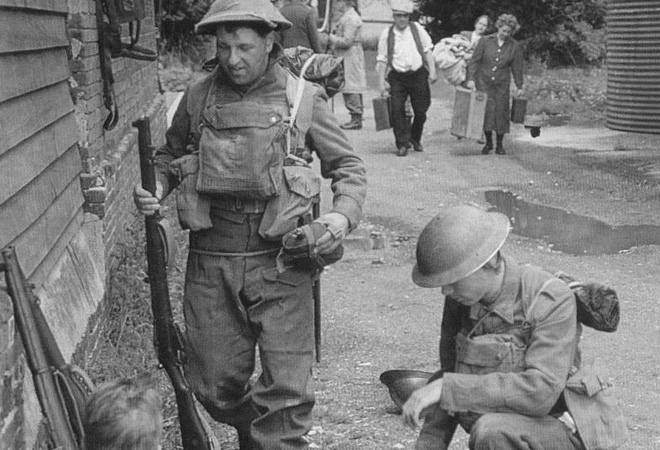
EDC
Apparently we accidentally wrote an article about how British military needs shaped the modern world, even if that wasn’t what we set out to write in the first place. But let’s keep with that and look at British infantry uniforms and equipment through the ages. We get closest to modern EDC starting with the WWI equipment. You can see can openers, compact entrenching tools, razors, penknife, mess kits, and flasks, all gear that we’ve talked about before, or maybe even sold to you. Paratroopers at Arnhem in 1944 saw updates, the Royal Marines in the Falklands in 1982 saw more, and we get truly modern versions of EDC with the Royal Engineers in Helmand in 2014.
The 1815 British soldier had mostly the same stuff too, just earlier in model. There were still knives, hygienic tools, navigational gadgets, mess kits, rations, all stuff you might need in the field. Go back farther and you’ll see a lot of the same stuff. Soldiers have set the standard for EDC for a thousand years, even if some of theirs was a little more weaponized than what an average civilian today might find they need.
The difference here is, soldiers’ EDC was more about surviving a war than opening a package from FedEx. Not that we’re disparaging your use of whatever gear you carry with you everyday. Hell, we’ve openly endorsed it. It’s just good to know why people started carrying some of these things in the first place. As often as not, it was a habit picked up on the battlefield.
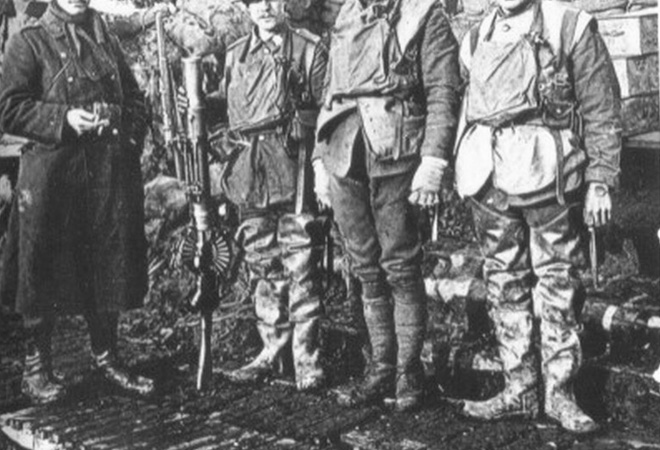
Wellington Boots
From what we’ve seen, the Duke of Wellington was ahead of his time in military fashion. He commissioned his regular shoemaker, George Hoby, to make a new type of boot that would look like the Hessians he wore with his British Army uniform, but could be worn with the new linen trousers soldiers had brought into British fashion. What Hoby ended up with was a boot with a lower cut than the Hessians and without their famous tassels, that could be comfortably worn in the new fashion. Wellington loved them.
Undoubtedly you’ve also noticed that the boot’s called the Wellington, not the Hoby. The reason for that, besides it rolling off the tongue better, was the Duke’s storied military career. He’d already been steadily gaining fame, but took a big step forward with the Battle of Vittoria in 1813. Wellington contributed to sweeping Napoleon from Spain and the public began dressing like the war hero. If that didn’t satisfy any naysayers, the Duke’s victory at the Battle of Waterloo, a battle so famous most Americans know what it is, despite us fighting an equally important war on our own soil.
The Wellington’s been to war a number of times, serving in pretty much every conflict the British had until the First World War, and probably in smaller parts after that. Modern Wellingtons, made of rubber and completely waterproof, were popularized in that same war as an effort to stave off trench foot. Like everything else, they followed the soldiers home and spread throughout households as people found more practical, everyday uses for them.

